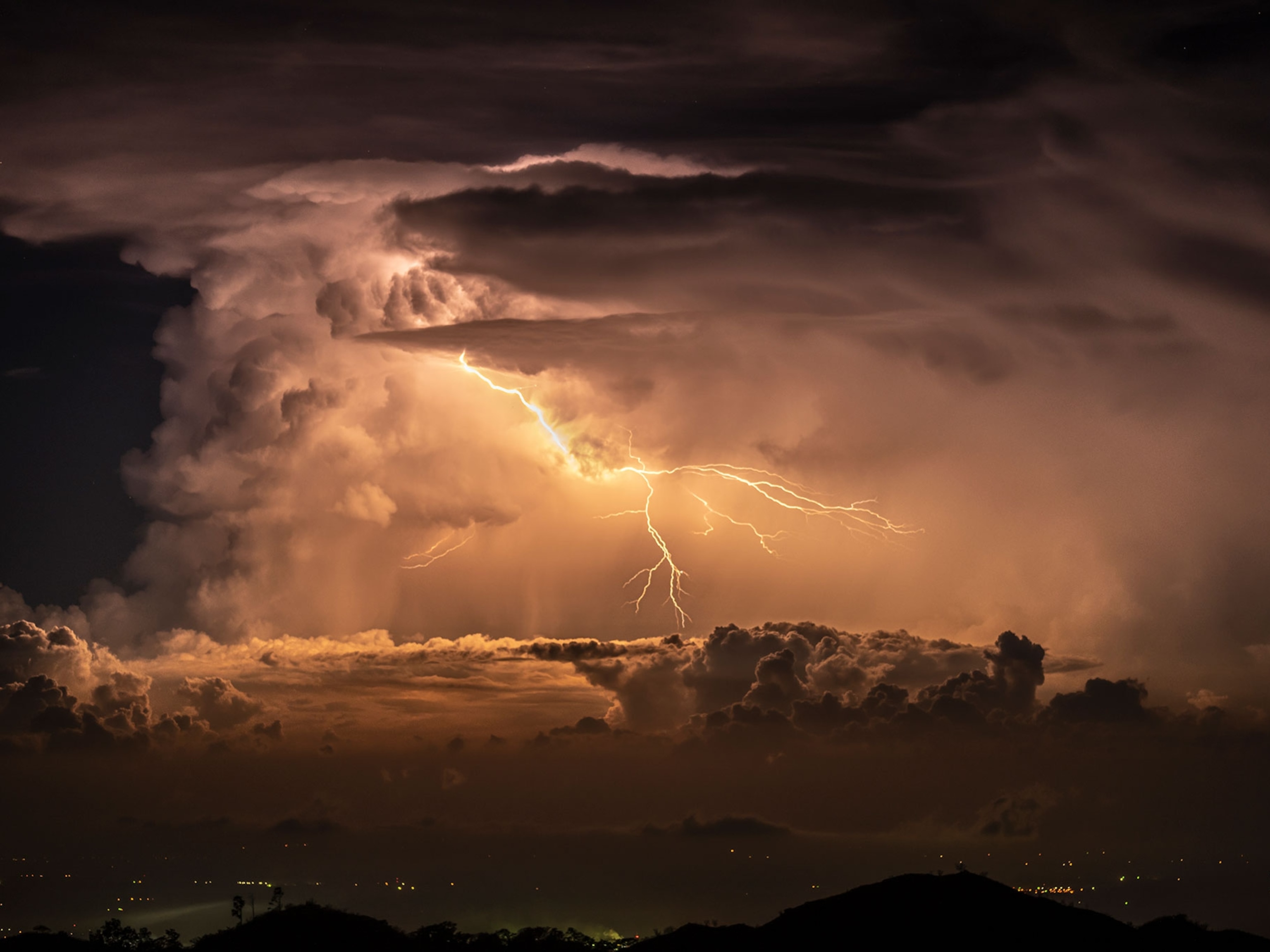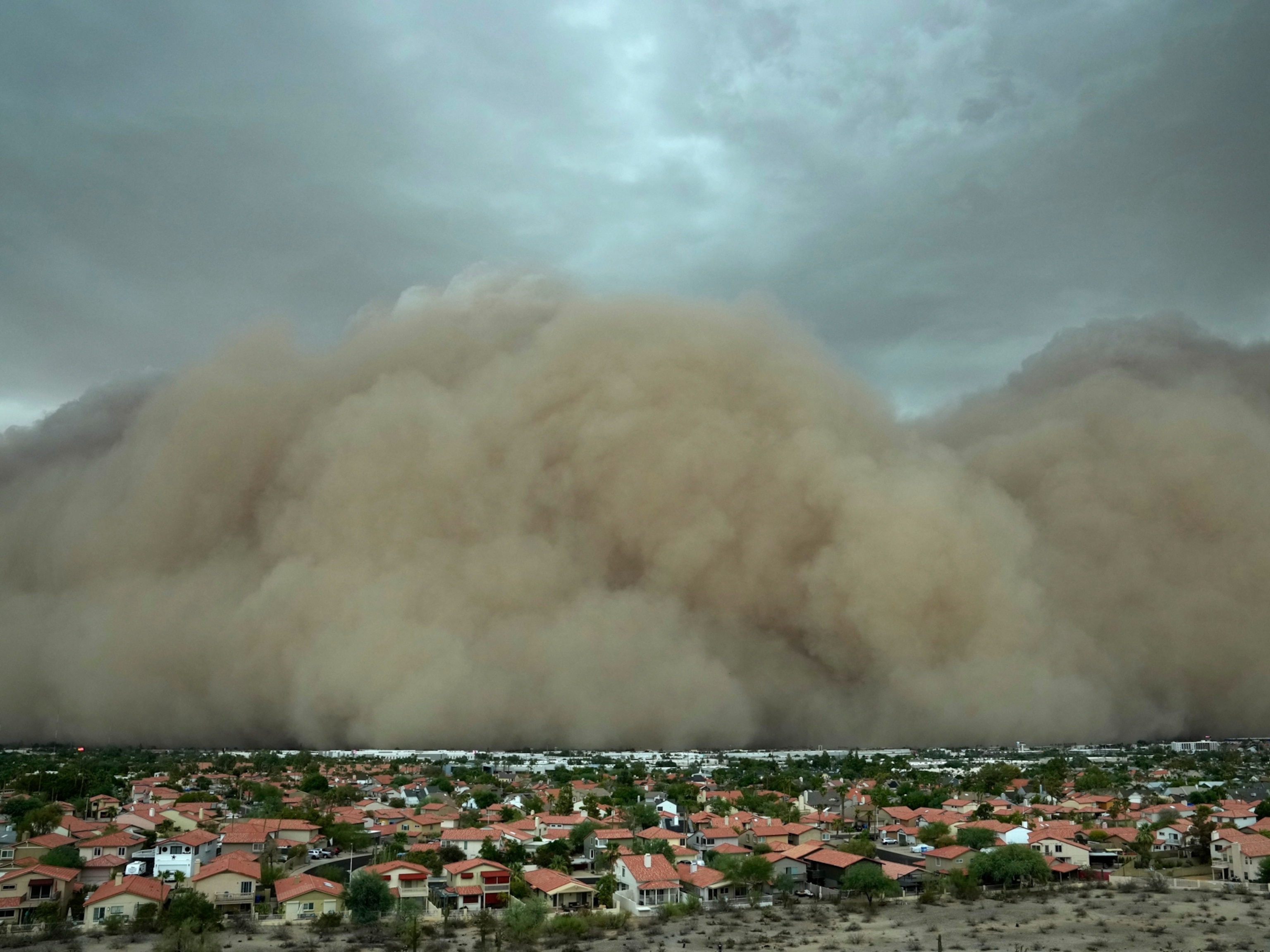
Hurricane Sandy: Why Full Moon Makes "Frankenstorm" More Monstrous
Gravitational effect combines with odd path and more to stir up storm surge.
Expected to affect as many as 60 million people from North Carolina to New England, Hurricane Sandy's been dubbed Frankenstorm as much for its monstrous proportions as for the disparate factors that have fueled its fury.
In an unfortunate, timely twist, even the full moon is helping to stir up the Halloween superstorm, making a bad situation even worse, especially for the New York City area, where flooding has already begun. (See Hurricane Sandy pictures.)
Sandy should make landfall on the New Jersey coast tonight as a Category 1 hurricane, with winds of at least 75 miles (120 kilometers) an hour.
"I think it will be catastrophic, to tell the truth," said Keith Blackwell, a meteorologist at the University of South Alabama's Coastal Weather Research Center. "I've never seen anything like it that far north that takes such a hard westward turn into a major metropolitan area." (Read "Utilities Brace for Power Outages as Hurricane Sandy Barrels Ashore.")
Hurricane Sandy's most devastating effects are likely to be caused by its storm surge, a mound of water piled up and pushed ahead by the storm's winds.
Most hurricanes approach the U.S. East Coast from the south, meaning that the full power of the surge is not driven directly into the coastal cities. Until recently, Sandy has followed that same northward path since leaving the Bahamas late last week.
But starting around noon Monday, when Sandy's center was about 360 miles (580 kilometers) east-southeast of Norfolk, Virginia, the storm began taking a turn for the worse. Making a sharp left, Sandy is now aimed for an uncharacteristically direct hit on the New York area.
The storm is expected to bring a surge of as much as 12 feet (3.7 meters) in places when it comes ashore. A tidal tug created by the full moon is expected to contribute as much as a foot (30 centimeters) to that total.
That may not sound like much, but a foot, or even less, could be the difference between inconvenience and disaster.
For one thing, meteorologist Jeff Masters noted that Hurricane Irene in 2011 stirred up floods in Manhattan that came within only a foot of flooding the city's subway system.
The chance of that happening is 50-50, the International Business Times news site reported Monday. If floodwaters do reach the subway, the entire system could flood within 40 minutes.
It could take weeks to remove the water and get the subways running again, according to the International Business Times. New York City's estimated economic output is estimated at four billion dollars per day. "If you have half of the city's economic capacity curtailed for four weeks, that adds up to damage in the range of 40 to 50 billion dollars,” Columbia University's Klaus Jacob told the site.
(Hurricane Irene Pictures: Floods Damage in New York, Beyond.)
Hurricanes and the Full Moon Effect
During a full moon, the sun, Earth, and the moon are arrayed in a straight line, intensifying their gravitational effects on the planet.
"Both the sun and moon are tugging on Earth," said Rick Luettich, Director of the University of North Carolina Institute for Marine Sciences.
This pull can cause a bulge in the ocean that makes high tides a little higher than at other times of month. These tides are known as "spring" tides, so-called because high tides spring up higher than usual.
(Get our tips on hurricane preparedness.)
More Than the Moon: Sandy's Other Incitements
But don't blame it just on the moon. Among other factors fueling Hurricane Sandy is a vast high-pressure system over Canada. The system essentially forms a wall blocking Hurricane Sandy from continuing north, as an Atlantic hurricane would typically do-hence the storm's deadly left turn today.
As the hurricane makes that turn, it will move over more than 300 miles (480 kilometers) of open water before it makes landfall. (A typical Atlantic hurricane would travel roughly along the East Coast, where contact with land can disrupt the storm, sapping it of power.)
Sandy's long journey to landfall will help the hurricane to pile up that unusually large storm surge as the tempest approaches the coast, the University of South Alabama's Blackwell said.
(Watch hurricane videos.)
But again, there's more. The jet stream too is doing its part.
This upper-level air current usually flows from west to east but occasionally changes direction. And in another freak development, the stream has now shifted so that it's flowing from the southeast to the northwest.
Joey Picca, a meteorologist at the National Weather Service Forecast Office in New York City, said this unusual jet stream configuration could help fuel Hurricane Sandy.
The jet stream is creating a vacuum above the storm, and, Picca said, "the air [from Sandy] has to go somewhere to fill that space." By drawing Sandy's air upward, the stream is helping to maintain the structure and circulation of the hurricane and even allowing it to strengthen.
Too Big to Fail?
For now, much of the East Coast watches and waits, with landfall expected within hours. If Hurricane Sandy hits around high tide around New York, the city "could be in a little bit of trouble," said Masters, director of the Weather Underground website.
High tide today at Coney Island will be at 8:18 p.m. ET. At that time, Sandy's center will be approaching the New Jersey coast.
But, UNC's Luettich said, the time and place may not matter that much at this point.
"This storm is so big that, regardless of where the exact center of the storm is, the wind field is so big and strong that it almost doesn't matter where it is at high tide," he said. "Its effects will extend longer than a single tidal cycle."








